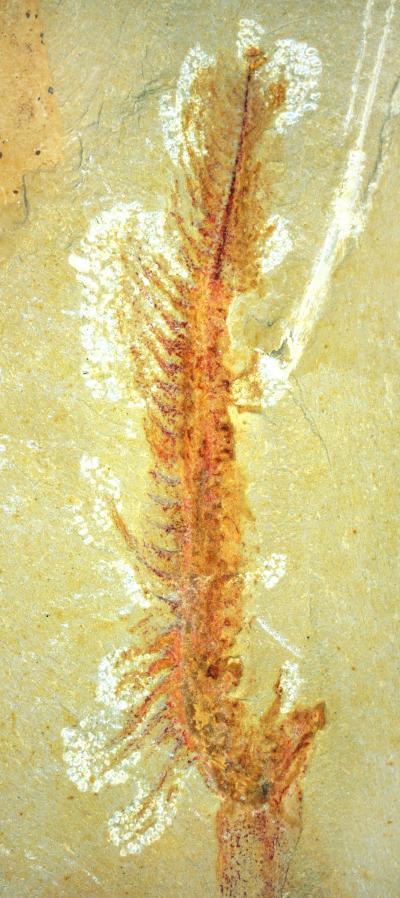Researchers from China, Leicester and Oxford have discovered a remarkable fossil which sheds new light on an important group of primitive sea creatures.
The 525-million-year-old fossil belongs to a group of tentacle-bearing creatures which lived inside hard tubes. Previously only the tubes have been seen in detail but this new specimen clearly shows the soft parts of the body including tentacles for feeding.
Details of the discovery have been announced today in the journal Current Biology. The study was funded by the Royal Society and the National Natural Foundation of China.
The creature belongs to a group called pterobranch hemichordates which are related to starfish and sea urchins but also show some characteristics that offer clues to the evolution of the earliest vertebrates. About 30 species of pterobranch are known to exist today although 380-490 million years ago a group of these animals called graptolites were common across the prehistoric oceans.
Pterobranches are creatures which secrete a substance that builds up into a hard tube around their soft body. Tentacles extend from the top of the tube to catch plankton. Although less than 4cm in length, the new fossil is beautifully preserved and minute details can be seen including 36 tiny tentacles along one feathery arm.

This is the entire 525 million-year-old hemichordate.
(Photo Credit: : Professor Derek Siveter, Oxford University)
Professor David Siveter from the University of Leicester's Department of Geology commented, "Amazingly, it has exceptionally preserved soft tissues - including arms and tentacles used for feeding - giving unrivalled insight into the ancient biology of the group."
Colleagues from Yunnan University and the Universities of Leicester and Oxford collaborated in identifying and describing the remarkable find which was discovered in Yunnan Province, China. It has been named Galeaplumosus abilus which means 'feathered helmet from beyond the clouds', referring to both the creature's shape and its location – 'Yunnan' literally translates as 'south of the clouds'.

This is the detail of 525 million-year-old hemichordate.
(Photo Credit: : Professor Derek Siveter, Oxford University)
Source: University of Leicester